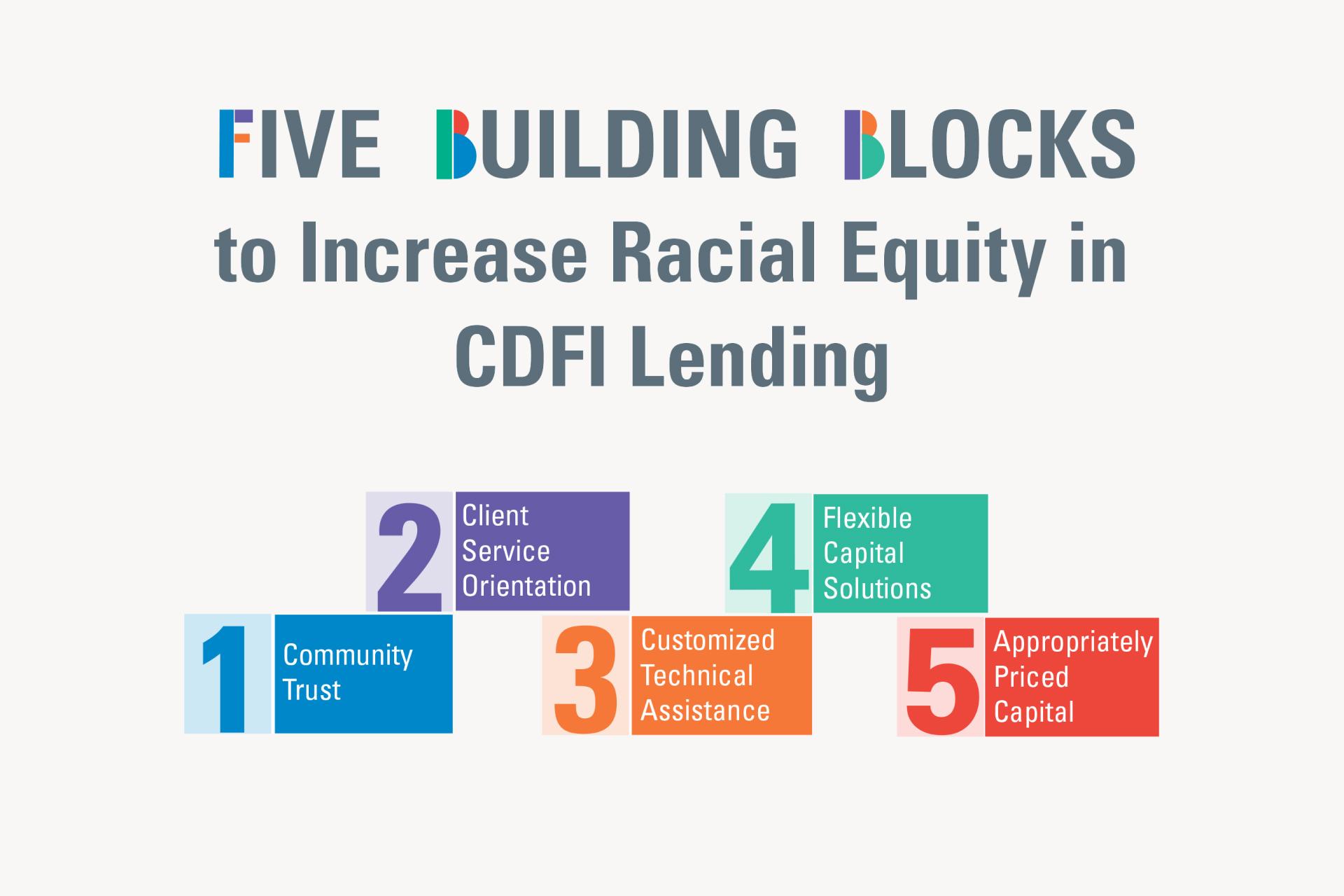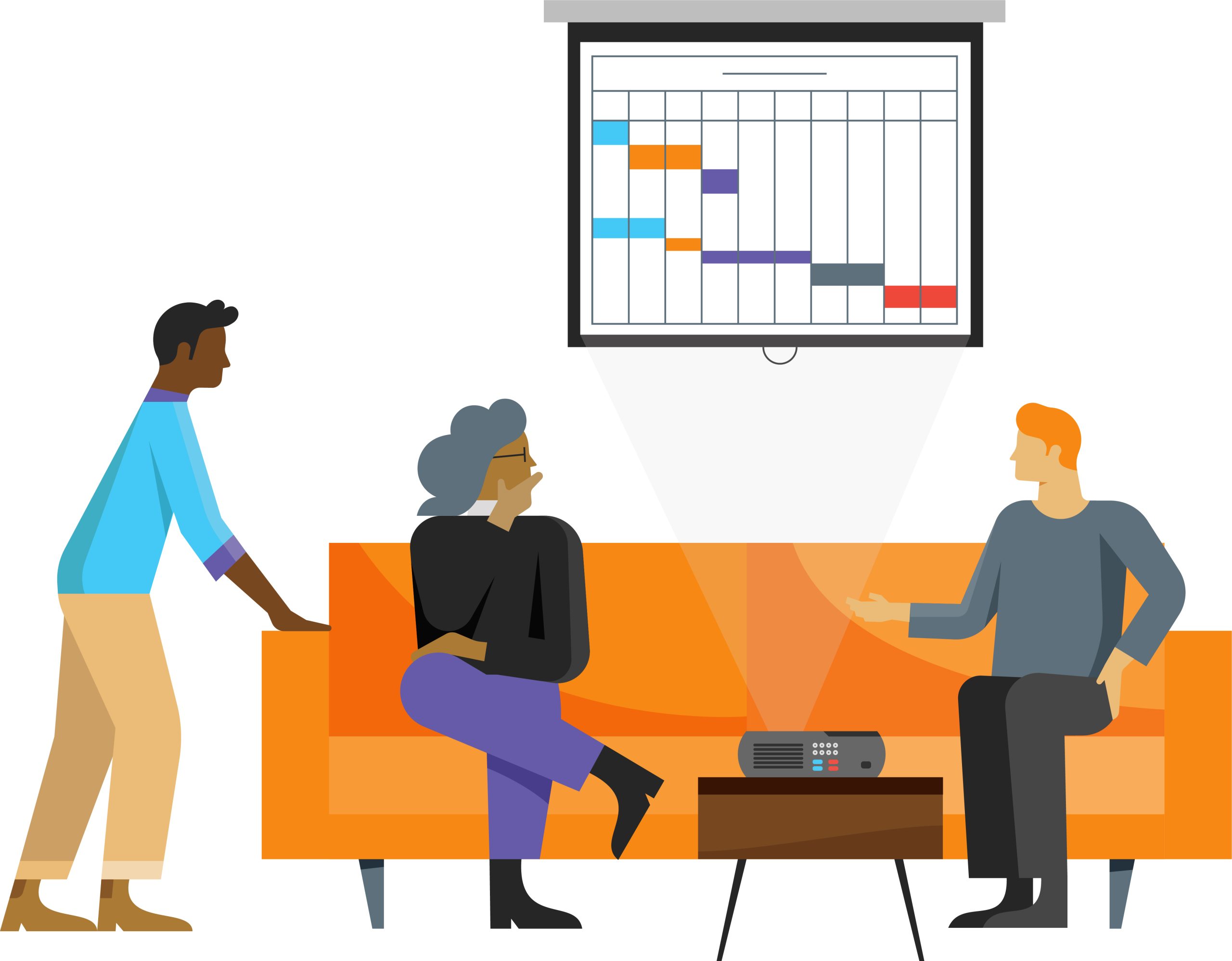Community Development Financial Institutions (CDFIs) have an important role to play in addressing racial inequities that have long persisted in US financial systems.
NFF and Capital Impact Partners joined together to form the Catalyzing Finance for Racial Equity project to understand how nonprofits have experienced working with CDFIs – the good and the bad – as well as how some local and national CDFIs have successfully taken steps to address inequity within their own lending practices. The goal was to identify new ways that CDFIs can center communities of color in how they lend and invest.
Findings have been captured in a new report that explores five effective building blocks for advancing racial equity in lending:
- Trust-building with communities
- Client service mindset that centers the needs of the community-based borrowers
- Technical assistance tailored to projects and practitioners
- Flexible capital solutions to solve problems of community-responsive organizations
- Appropriately priced capital
About Catalyzing Finance for Racial Equity
Catalyzing Finance for Racial Equity (CFRE) was first conceived in late 2019 and concluded in 2022. NFF and Capital Impact Partners had four goals for CFRE, all of which we continue to pursue in our ongoing equity work as CDFIs:
- Continue to deepen awareness of and insights about racial equity dynamics and build the organizational structure to support this work within our organizations.
- Develop new insights, tools, and approaches for embedding racial equity in investment practices.
- Engage broader CDFI peers in learning and training.
- Build links between CDFI sector and broader national movements for racial equity.
In the first research phase of this project, NFF and Capital Impact partnered with The Racial Equity Assets Lab (The REAL) to gather insights from five Bay Area community organizations leading multi-sector, multi-collaborator initiatives to examine how CDFI practices and services could be improved to better support community health. Research findings were summarized with recommendations that helped form the CFRE framework of five building blocks, which are described above.
We also knew that other CDFIs were on a similar journey, and that it would be beneficial to hear about the approaches they had developed. Working again with The REAL, we interviewed 10 CDFIs in four states (Michigan, Mississippi, New Mexico, and Louisiana). These CDFIs were both large and small, national and hyper-local, some with very specific target audiences, others with a broad bend. The REAL interviewed staff and leadership about their experience with community development and lending, specifically discussing the CFRE Racial Equity Framework and five building blocks, and how they resonated with their CDFI work.
The Five Building Blocks

Just as NFF and Capital Impact are in different places along the continuum of changing or improving internal policies and practices to center racial equity, each CDFI’s racial equity journey will follow different paths. Our hope is that by sharing the discoveries, truths and successes of this project, we can spark conversations about how to work collectively as a field to address racist lending practices and create a better industry.
Resources
- Five Ways That Lenders Can Interrupt Racism and Provide Restorative-Justice Capital in Our Communities by IFF
- Health Equity Principles for State and Local Leaders in Responding to, Reopening and Recovering from COVID-19 by the Robert Wood Johnson Foundation
- Advancing Equity: Diversity and Inclusion at CDFIs by FUND Community Institute (FUND CI)
- Building to Heal: A Framework for Holistic Community Development by Enterprise



